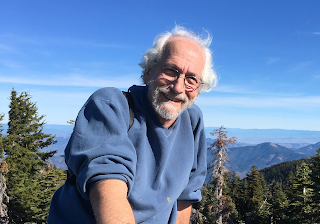I never had a Barbie doll. Barbies came along after my doll days, and, besides, wasn't Barbie a symbol of all that was wrong—having to have the perfect body, being a sex object, having to wear high heels? These were Barbie associations we scorned in the hippy days.
Nonetheless, without question, my favorite Christmas present this year, from my sister Laura, was a Barbie doll. I opened the Barbie package—Laura and my other sister, Sharon, were watching on Google Meet—and I burst out laughing. They were laughing, too We were sharing again the moments of watching the Barbie movie in Laura's den the week after Thanksgiving. Oh, how we had laughed. It was a sisters' bonding, sharing untold moments in our pasts as girls and women.
Laura had given Sharon a Barbie doll for Christmas, too. She held hers up to show me—Barbie, the yoga teacher. We reminisced about favorite scenes in the movie— Barbie walking into the shower on tiptoes, "Kenough" on Ken's shirt and the back end of a racehorse showing on a large-screen TV behind him when he talks to Barbie on the doorstep. The tribute to Ruth Handler. Barbie's concession, at the end of the movie, that every night didn't have to be girls' night.
We thought Greta Gerwig was brilliant, and we knew the truth of Gloria's monologue. "You're so beautiful and so smart." she says to Barbie, "and it kills me that you don't think you're good enough." Such familiar attitudes.
Barbie no longer symbolizes what's wrong with the culture; she symbolizes that a girl can be whatever she aspires to be. (Laura said she had tried to find me a Barbie who was a professor of Old English, but had to settle for the baker Barbie.) I love having a Barbie. Standing tall (but not in heels) on my windowsill, she reminds me of how much has changed for women and how much I love my sisters.
.jpg)
































